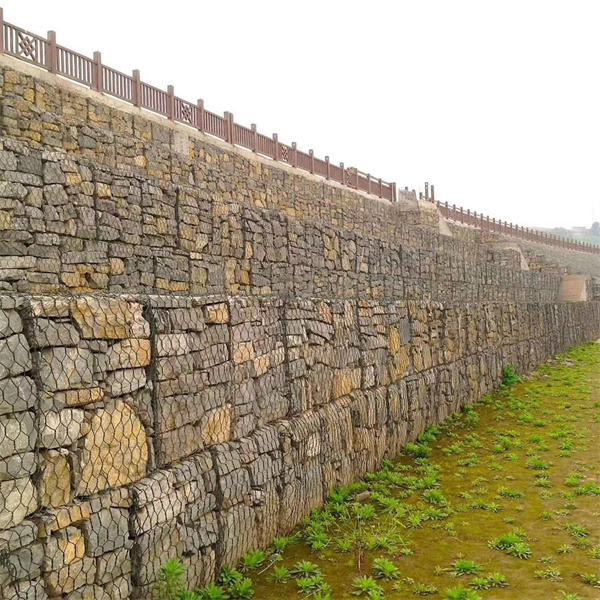Δεκ . 13, 2024 00:21 Back to list
gabion fill material
The Importance of Gabion Fill Material
Gabions, which are wire mesh containers filled with stones or other materials, have emerged as an effective solution for a variety of engineering and environmental challenges. They are frequently used in civil engineering projects, landscaping, and erosion control. One crucial component of gabion structures is the fill material, which not only affects their functionality but also contributes to their aesthetic appeal.
What is Gabion Fill Material?
Gabion fill materials refer to the substances used to fill the gabion baskets. While traditional gabions primarily utilize natural stones, a variety of materials can be employed depending on the project requirements. The choice of fill material can significantly impact the structural integrity and aesthetic qualities of the gabion wall or structure. Common fill materials include natural river stones, crushed stone, concrete debris, and recycled materials such as glass or plastic.
Characteristics of Ideal Gabion Fill Material
When selecting fill material for gabions, several factors must be considered. The material should ideally possess certain qualities
1. Durability The fill material must withstand environmental forces, such as water flow and weather changes. Natural stones with high durability and resistance to erosion are typically preferred.
2. Size and Shape The size and shape of the fill material are crucial for achieving effective compaction and minimizing movement within the gabion. Angular stones are often favored over rounded ones for their interlocking properties.
3. Weight Heavier materials can provide additional stability to the gabion structure. However, overly heavy materials might complicate transportation and installation.
4. Eco-Friendliness Using recycled or locally sourced materials can enhance the sustainability of the project and reduce its carbon footprint.
5. Aesthetic Appeal The visual qualities of the fill material contribute to the overall look of the structure. A well-chosen fill can enhance the natural beauty of the site and blend harmoniously with the surrounding environment.
Applications of Gabion Fill Material
Gabion structures have versatile applications across different fields
gabion fill material

1. Erosion Control One of the most common uses of gabions is for preventing soil erosion along riverbanks, steep slopes, and coastlines. The fill material helps to absorb the energy of flowing water and stabilize the soil.
2. Retaining Walls Gabions are often used as retaining walls to hold back earth and create level surfaces in hilly terrains. The choice of fill material can influence the wall's resistance to shifting and its overall aesthetic.
3. Landscape Architecture Gabions fill can serve decorative purposes in landscaping projects. The various colors and textures of different stones can be used creatively to design pathways, seating areas, or garden borders.
4. Noise Barriers Gabion walls filled with dense materials can act as effective noise barriers in urban areas, helping to reduce sound pollution from traffic or construction activities.
5. Flood Control Gabion structures can be strategically placed to redirect or slow down floodwaters, reducing the impact of flooding on nearby habitats and properties.
Best Practices for Gabion Fill Material Usage
To maximize the benefits of gabion fill materials, adhere to the following best practices
- Conduct Site Analysis Before selecting the fill material, assess the site conditions, including soil type, drainage patterns, and potential environmental impacts.
- Choose Quality Materials Always opt for high-quality, durable materials to ensure the longevity and stability of the gabion structure.
- Implement Proper Installation Follow best practices during the installation process, including proper compaction and drainage to avoid future issues related to settling or water damage.
- Regular Maintenance Periodically inspect gabion structures to ensure the fill remains intact and the wire mesh remains secure, allowing for timely repairs if needed.
Conclusion
Gabion fill materials play a pivotal role in the functionality, durability, and aesthetics of gabionic structures. By carefully selecting the appropriate fill material, engineers and designers can create sustainable solutions that address a range of environmental and structural challenges while enhancing the beauty of the landscape. As we continue to seek innovative ways to protect and improve our environments, gabions and their fill materials will undoubtedly remain a valuable resource in the field of construction and landscaping.
-
HESCO Gabion Baskets for Coastal Erosion Prevention
NewsAug.22,2025
-
Longevity and Durability of River Rock Gabion Walls
NewsAug.22,2025
-
How to Integrate Gabion 3D Walls in Urban Planning
NewsAug.22,2025
-
Reno Mattress Gabion Applications in Civil Engineering
NewsAug.22,2025
-
How to Install Wire Mesh for Gabion Baskets Properly
NewsAug.22,2025
-
Best Materials for Filling a Chain Link Gabion
NewsAug.22,2025
-
Wire Mesh Thickness Impact on Gabion Wall Load Bearing
NewsAug.12,2025






